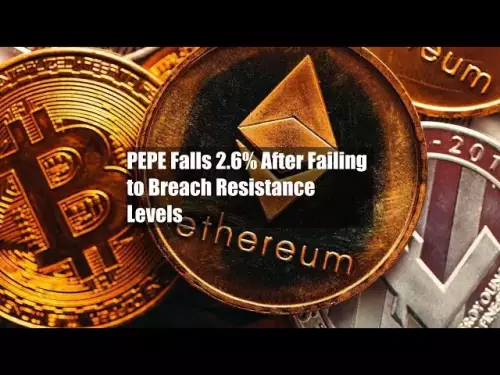-
 bitcoin
bitcoin $124586.364639 USD
0.62% -
 ethereum
ethereum $4670.671710 USD
3.33% -
 xrp
xrp $2.983701 USD
0.18% -
 tether
tether $1.000175 USD
-0.03% -
 bnb
bnb $1209.430642 USD
2.76% -
 solana
solana $231.365861 USD
0.51% -
 usd-coin
usd-coin $0.999665 USD
-0.02% -
 dogecoin
dogecoin $0.264657 USD
4.46% -
 tron
tron $0.346415 USD
1.60% -
 cardano
cardano $0.871586 USD
3.70% -
 chainlink
chainlink $23.451270 USD
7.56% -
 hyperliquid
hyperliquid $46.860071 USD
-2.96% -
 ethena-usde
ethena-usde $1.000120 USD
0.04% -
 sui
sui $3.611279 USD
1.08% -
 stellar
stellar $0.407149 USD
0.96%
What is DeFi's cross-chain bridge?
Cross-chain bridges in DeFi facilitate the transfer of crypto assets between blockchains, bridging the gap between disparate ecosystems and enabling users to access a wider range of DeFi products and services.
Feb 17, 2025 at 04:49 am
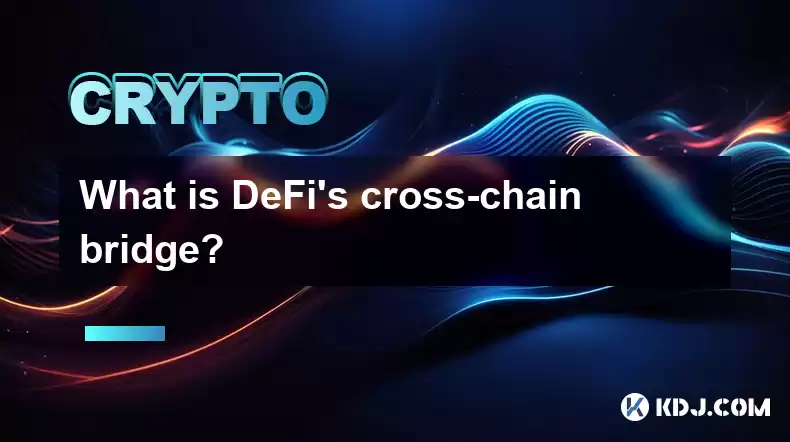
- Definition of DeFi's Cross-Chain Bridge
- Benefits of Cross-Chain Bridges
- Types of Cross-Chain Bridges
- Crypto Assets Supported by Cross-Chain Bridges
- Considerations When Using Cross-Chain Bridges
- Security Risks Associated with Cross-Chain Bridges
- Popular DeFi Projects with Cross-Chain Bridges
A decentralized finance (DeFi) cross-chain bridge is a blockchain-based protocol that facilitates the secure transfer of crypto assets between different blockchains. It enables seamless interoperability between disparate blockchain ecosystems, allowing users to access and utilize decentralized applications (dApps) and protocols across multiple networks.
Benefits of Cross-Chain Bridges:- Enhanced Interoperability: Cross-chain bridges break down blockchain silos, allowing users to seamlessly move assets between different networks. This interoperability fosters innovation and collaboration within the wider DeFi landscape.
- Access to Diverse DeFi Ecosystems: By connecting different blockchains, cross-chain bridges provide users with access to a wider range of DeFi products and services. This diversity enhances investment opportunities and expands the scope of DeFi applications.
- Optimization of Yield Farming Strategies: Cross-chain bridges enable users to explore yield farming opportunities across multiple blockchains. By optimizing their strategies with diverse ecosystems, users can maximize their returns and diversify their risk exposure.
- Reduced Transaction Fees: Some cross-chain bridges offer lower transaction fees compared to exchanges, making them a cost-effective option for transferring assets between blockchains.
- Atomic Swaps: Atomic swaps are trustless, peer-to-peer asset exchanges that occur directly between two parties. They leverage smart contracts to ensure that both parties receive their desired assets simultaneously, eliminating the need for third-party intermediaries.
- Custodial Bridges: Custodial bridges hold users' assets in a centralized manner, requiring trust in the bridge operator. They offer fast and reliable transactions but may pose counterparty risk concerns due to the custodian's control over assets.
- Non-Custodial Bridges: Non-custodial bridges provide self-custody of assets, meaning users retain control over their private keys. These bridges are more secure but may have lower throughput and increased latency compared to custodial bridges.
Cross-chain bridges support a wide range of crypto assets, including:
- Stablecoins: Bridges allow users to transfer stablecoins, such as USDT, USDC, and BUSD, between different blockchains.
- Ethereum-based Tokens (ERC-20): Bridges support the transfer of Ethereum-based tokens, including popular DeFi tokens like Uniswap (UNI), Aave (AAVE), and Chainlink (LINK).
- Bitcoin (BTC): Some bridges, such as Ren and Thorchain, support the transfer of Bitcoin between different blockchains.
- Other Cryptocurrencies: Cross-chain bridges are expanding their support to a wider range of cryptocurrencies, including altcoins, utility tokens, and non-fungible tokens (NFTs).
- Bridge Security: Thoroughly research the security measures implemented by the cross-chain bridge. Consider factors such as audit reports, bug bounty programs, and insurance coverage.
- Asset Liquidity: Before making a transfer, assess the liquidity of the asset on both the source and destination blockchains. Limited liquidity may impact the speed and execution of your transaction.
- Transaction Fees: Compare the transaction fees charged by different cross-chain bridges to find the most cost-effective option. Factors to consider include bridge fees, network fees, and gas fees.
- Interoperability with dApps: Ensure that the cross-chain bridge supports the specific blockchains and dApps you intend to use.
- Counterparty Risk: Consider the potential counterparty risk associated with custodial bridges. Trust the bridge operator to safeguard your assets and adhere to ethical practices.
- Smart Contract Vulnerabilities: Cross-chain bridges rely on smart contracts, which can be vulnerable to bugs, exploits, and malicious attacks.
- Fraudulent Bridge Operators: Custodial bridges entrust third-party bridge operators with user assets, increasing the risk of fraud and mismanagement.
- Private Key Loss: Non-custodial bridges require users to retain control over their private keys. If private keys are stolen or lost, users may lose access to their assets.
- Economic Attacks: Cross-chain bridges are susceptible to economic attacks, such as swap attacks, which exploit vulnerabilities in the bridging process to gain financial advantage.
- Aave: AAVE token deposits can be bridged between Ethereum, Polygon, and Avalanche.
- Curve: CRV token deposits can be bridged between Ethereum, Fantom, and Polygon.
- Yearn Finance: YFI token deposits can be bridged between Ethereum, Polygon, and Fantom.
- SushiSwap: SUSHI token deposits can be bridged between Ethereum, Polygon, and Optimism.
- PancakeSwap: CAKE token deposits can be bridged between Ethereum, Polygon, and Binance Smart Chain (BSC).
- What are the primary use cases of DeFi cross-chain bridges?
- Transferring assets between different blockchains
- Accessing a wider range of DeFi ecosystems
- Optimizing yield farming strategies
- Reducing transaction fees
- Which types of cross-chain bridges are most secure?
- Generally, non-custodial cross-chain bridges offer the highest level of security.
- Are there any upcoming trends in DeFi cross-chain bridge technology?
- Interoperability with Layer 2 solutions is becoming increasingly prevalent.
- Research and development is ongoing into trustless, multi-chain bridges.
- How does the Ethereum 2.0 merge impact cross-chain bridges?
- The merge may enhance the overall speed and efficiency of cross-chain bridges.
- What factors affect the transaction fees of cross-chain bridges?
- Bridge fees, network gas fees, and asset liquidity influence transaction costs.
Disclaimer:info@kdj.com
The information provided is not trading advice. kdj.com does not assume any responsibility for any investments made based on the information provided in this article. Cryptocurrencies are highly volatile and it is highly recommended that you invest with caution after thorough research!
If you believe that the content used on this website infringes your copyright, please contact us immediately (info@kdj.com) and we will delete it promptly.
- BlockDAG, DOGE, HYPE Sponsorship: Crypto Trends Shaping 2025
- 2025-10-01 00:25:13
- Deutsche Börse and Circle: A StableCoin Adoption Powerhouse in Europe
- 2025-10-01 00:25:13
- BlockDAG's Presale Buzz: Is It the Crypto to Watch in October 2025?
- 2025-10-01 00:30:13
- Bitcoin, Crypto, and IQ: When Genius Meets Digital Gold?
- 2025-10-01 00:30:13
- Stablecoins, American Innovation, and Wallet Tokens: The Next Frontier
- 2025-10-01 00:35:12
- NBU, Coins, and Crypto in Ukraine: A New Yorker's Take
- 2025-10-01 00:45:14
Related knowledge

How to track DeFi activity on a block explorer
Sep 04,2025 at 05:36pm
Bitcoin's Role in Decentralized Finance1. Bitcoin remains the cornerstone of the cryptocurrency ecosystem, serving as both a store of value and a benc...
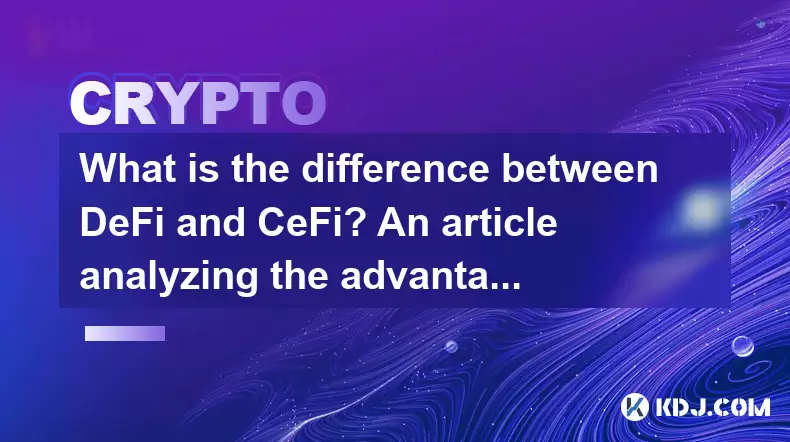
What is the difference between DeFi and CeFi? An article analyzing the advantages and disadvantages of both
Jun 13,2025 at 03:57am
Understanding the Foundations of DeFi and CeFiTo fully grasp the difference between DeFi (Decentralized Finance) and CeFi (Centralized Finance), it’s ...
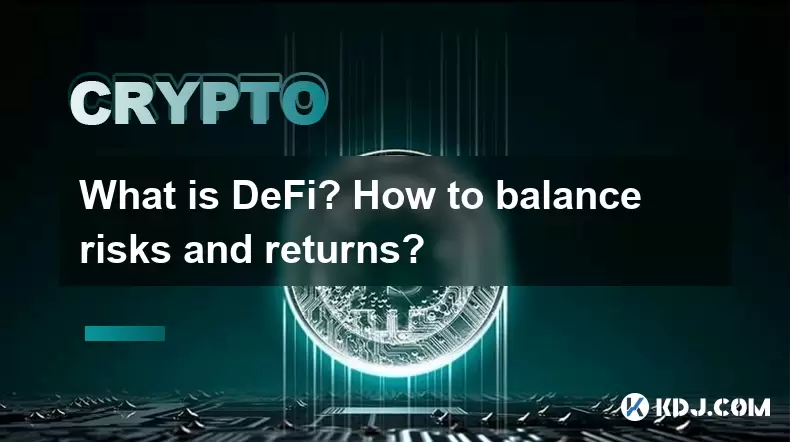
What is DeFi? How to balance risks and returns?
May 31,2025 at 12:22pm
What is DeFi? How to Balance Risks and Returns? Decentralized Finance, commonly known as DeFi, represents a revolutionary shift in the financial ecosy...
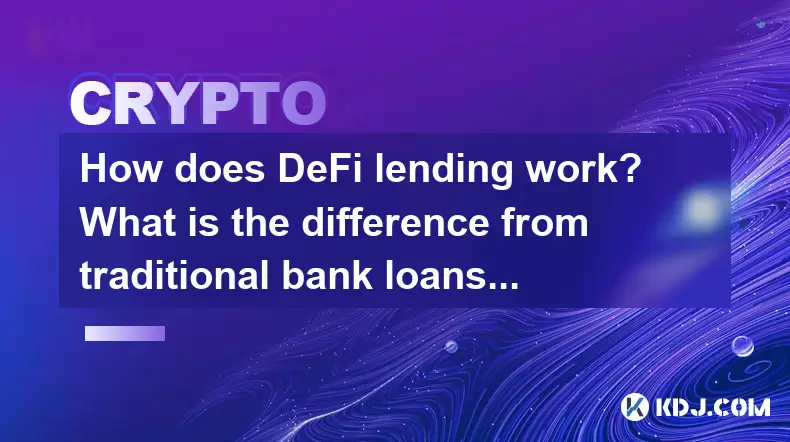
How does DeFi lending work? What is the difference from traditional bank loans?
May 29,2025 at 05:36pm
Introduction to DeFi LendingDeFi lending, or decentralized finance lending, represents a revolutionary shift in the way borrowing and lending are cond...
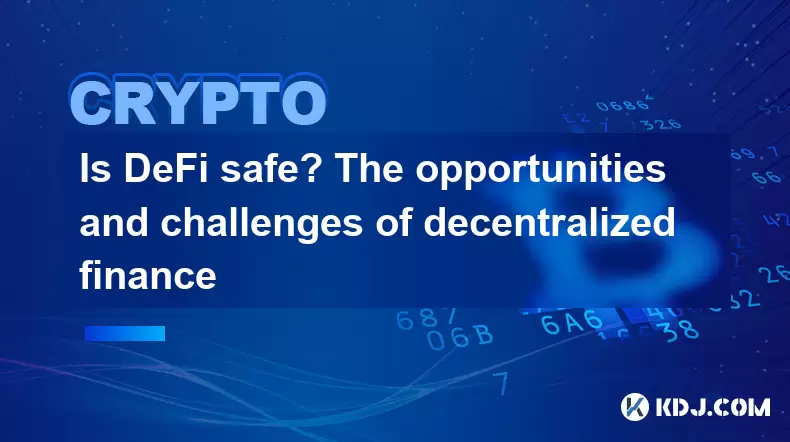
Is DeFi safe? The opportunities and challenges of decentralized finance
May 27,2025 at 02:28pm
Decentralized Finance, commonly known as DeFi, has revolutionized the financial landscape by offering a range of financial services without the need f...
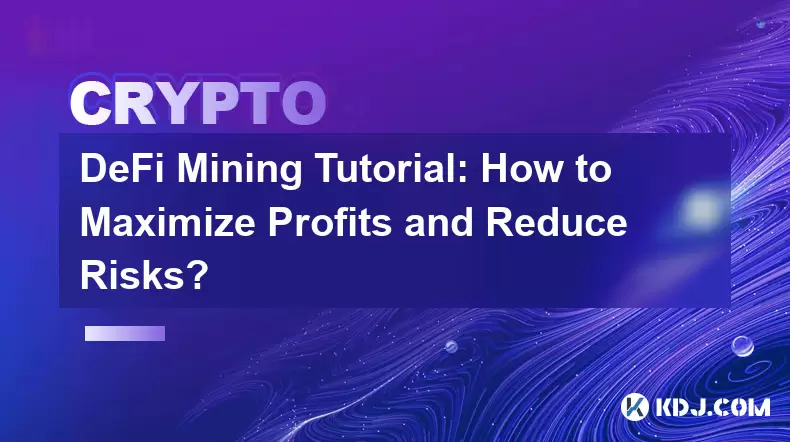
DeFi Mining Tutorial: How to Maximize Profits and Reduce Risks?
May 27,2025 at 07:42am
DeFi, or Decentralized Finance, has opened up a new world of opportunities for crypto enthusiasts looking to maximize their profits through various mi...

How to track DeFi activity on a block explorer
Sep 04,2025 at 05:36pm
Bitcoin's Role in Decentralized Finance1. Bitcoin remains the cornerstone of the cryptocurrency ecosystem, serving as both a store of value and a benc...

What is the difference between DeFi and CeFi? An article analyzing the advantages and disadvantages of both
Jun 13,2025 at 03:57am
Understanding the Foundations of DeFi and CeFiTo fully grasp the difference between DeFi (Decentralized Finance) and CeFi (Centralized Finance), it’s ...

What is DeFi? How to balance risks and returns?
May 31,2025 at 12:22pm
What is DeFi? How to Balance Risks and Returns? Decentralized Finance, commonly known as DeFi, represents a revolutionary shift in the financial ecosy...

How does DeFi lending work? What is the difference from traditional bank loans?
May 29,2025 at 05:36pm
Introduction to DeFi LendingDeFi lending, or decentralized finance lending, represents a revolutionary shift in the way borrowing and lending are cond...

Is DeFi safe? The opportunities and challenges of decentralized finance
May 27,2025 at 02:28pm
Decentralized Finance, commonly known as DeFi, has revolutionized the financial landscape by offering a range of financial services without the need f...

DeFi Mining Tutorial: How to Maximize Profits and Reduce Risks?
May 27,2025 at 07:42am
DeFi, or Decentralized Finance, has opened up a new world of opportunities for crypto enthusiasts looking to maximize their profits through various mi...
See all articles

























